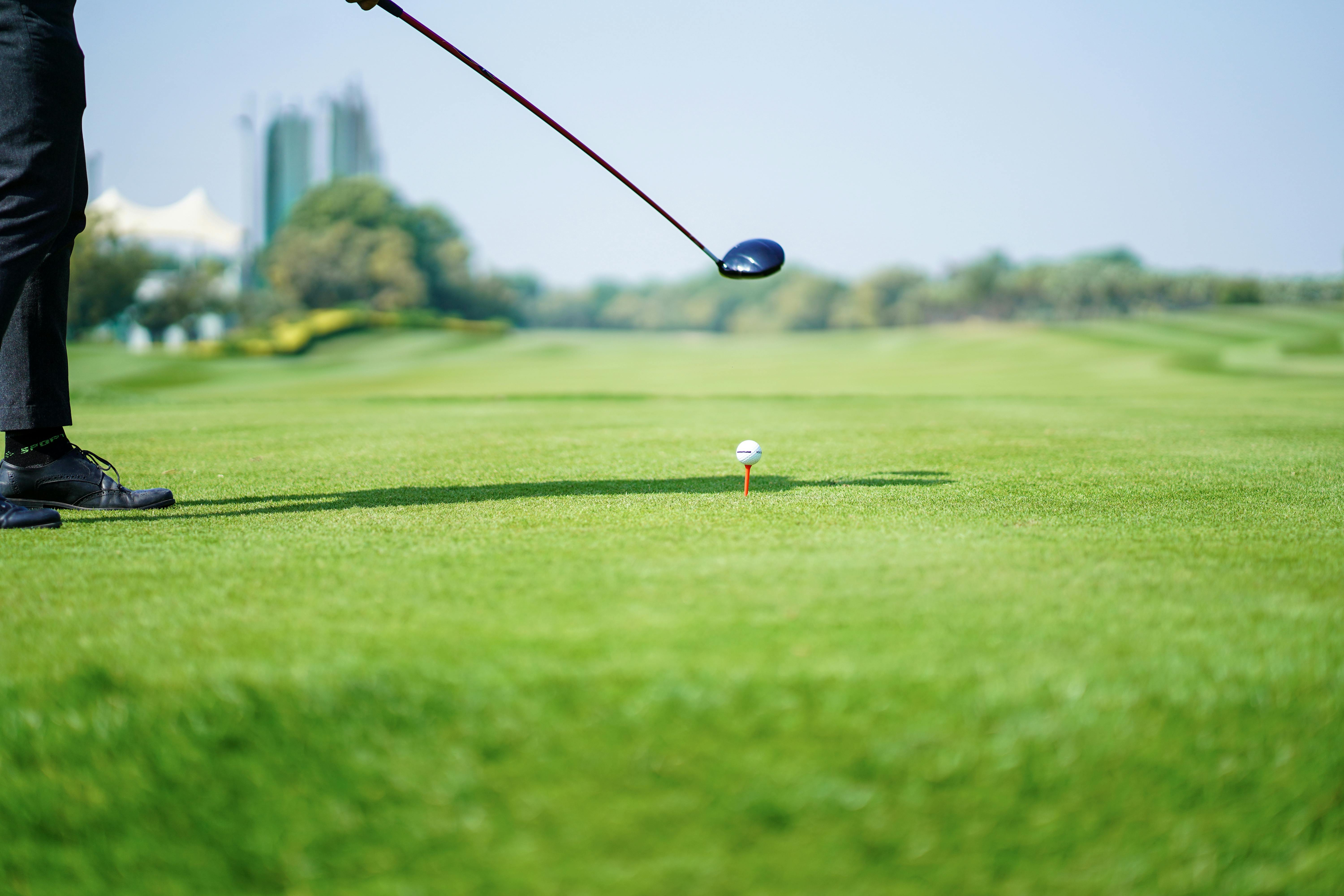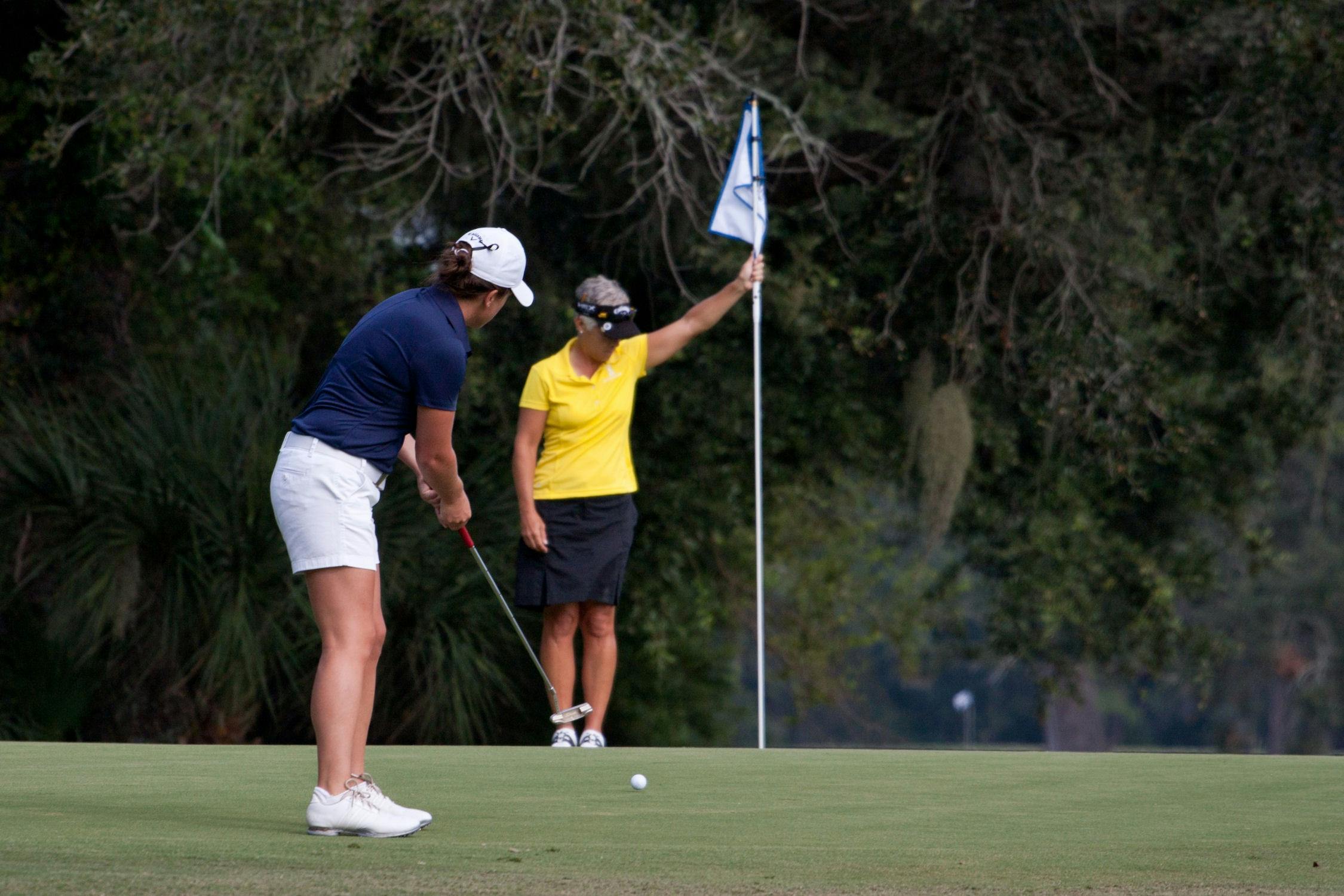Hitting a golf ball may seem like a simple task at first glance. However, proper technique is essential in order to achieve maximum distance and accuracy. In this article, we will discuss the fundamentals of how to properly hit a golf ball. We will cover the basics of stance, grip, swing mechanics, and much more. With these tips and tricks, you can be sure to hit your golf ball with greater confidence and accuracy.Understanding the basics of golf swing mechanics requires an understanding of the fundamental elements that make up a proper golf swing. These elements include grip, stance, posture, backswing, downswing, and follow-through. The grip is how one holds the club and is generally one of three types: overlapping, interlocking, or 10 finger. The stance is how one stands in relation to the target line and should be comfortable yet balanced and stable. Posture focuses on body alignment and should be maintained throughout the swing. The backswing is an upward movement of the arms and hands with a slight rotation of the hips and shoulders to create momentum for a smooth transition into the downswing. The downswing is an acceleration of the arms and hands towards the target while maintaining body alignment to create power in the shot. Finally, follow-through involves continuing through with momentum after impact with a focus on balance and control. Understanding each element in detail can help golfers develop a sound golf swing mechanics to improve their game.
Develop a Pre-Shot Routine
Having a consistent golf swing starts with having a pre-shot routine that you can trust. This routine should be the same every time you address the ball, regardless of the shot or situation. Before every shot, take a few moments to assess the situation and determine what club you will be using. Visualize the shot you want to make and focus on your target. Take a few practice swings to get a feel for your swing and then commit to making your best effort when you step up to hit the ball.
Maintain Proper Posture
Good posture is essential for developing a consistent golf swing. Start by standing straight with your feet shoulder width apart and slightly bent at the knees and hips. Make sure your head stays down throughout your swing, keeping your eyes focused on the ball. Pay special attention to keeping your arms close to your body throughout the swing and make sure you don’t sway or move too much from side to side during your backswing or follow through.
Focus on Your Swing Path
Focusing on maintaining a proper swing path is key for developing consistency in your golf swing. Make sure that you are swinging in an arc, rather than straight back and forth, as this will help ensure that you are hitting the ball in its intended direction. Practice making slow swings at first so that you can better understand how to maintain an arc while increasing speed gradually as you become more comfortable.
Start With Short Shots
When first starting out with developing a consistent golf swing it’s best to start with short shots such as chips and pitches from around the green or short irons off of the fairway. Working on these shots will help build confidence in your mechanics and allow you to work out any kinks before attempting longer shots.
Practice Regularly
The most important tip for developing a consistent golf swing is practice, practice, practice! Find time each week to go out and hit balls at the driving range or even just set up some targets in your backyard or neighborhood park if there’s no range nearby. The more time and effort that you put into honing your skills, the better golfer you will become!
Knowing the Right Equipment for Hitting the Ball
Hitting a ball correctly requires more than just skill. The right equipment is essential to ensure a successful hit. Without the proper equipment, it can be difficult to generate enough power to hit the ball far enough or with enough accuracy. It’s important to choose quality equipment that fits your size, skill level, and playing style.
The most important piece of equipment for hitting a ball is a bat. There are a variety of bats available, including wood and aluminum bats, and each type has specific advantages and disadvantages. Wood bats are heavier than aluminum bats, so they provide more power on contact. However, they don’t last as long as aluminum bats and can be more expensive. Aluminum bats are lighter in weight, making them easier to swing quickly and generate speed on contact with the ball. They are also more durable than wood bats and can last longer if cared for properly.
In addition to choosing the right type of bat, you also need to select one that is appropriately sized for your height and strength level. A bat that is too long or too heavy can make it difficult to generate speed during your swing. You should also look for a bat with an ergonomic grip that fits comfortably in your hands.
Finally, you will need protective gear such as batting gloves and helmets to help protect yourself from injury while playing baseball or softball. Batting gloves provide extra grip on the bat handle while also protecting your hands from blisters or calluses caused by repeated contact with the bat’s handle. Helmets protect your head from errant pitches or foul balls that may come your way while you’re at the plate.
Having the right equipment is essential for hitting a ball correctly. With quality equipment that fits your size and skill level, you will be able to swing confidently and hit the ball farther and with greater accuracy. So make sure you have all the necessary gear before stepping up to the plate!
Practicing Good Posture and Balance When Hitting
Good posture and balance are two of the most important elements to consider when hitting a baseball, softball, or any other bat sport. Having proper posture and balance will ensure that you can hit the ball with more power, accuracy, and control. Proper posture will also help protect you from injuries. Here are some tips for practicing good posture and balance when hitting:
• Stand with your feet slightly wider than shoulder width apart with your weight evenly distributed on both feet. This will give you a stable base from which to start your swing.
• Bend at the knees slightly to lower your center of gravity so that you can generate more power in your swing.
• Keep your head up and looking straight ahead as you swing, making sure to keep your eyes on the ball until it hits the bat.
• Keep your arms in close to your body throughout the swing. This will help maintain good balance and create a solid foundation for your swing.
• Focus on transferring energy from your lower body through your arms into the bat as you make contact with the ball. This will help generate more power in your swing.
By following these tips, you can practice good posture and balance when hitting a baseball or softball. This will help you become a better hitter by increasing accuracy, power, and control in your swings.
Knowing Your Grip for Maximum Power and Control
Gripping the racket correctly is one of the most important aspects of playing tennis. Having a good grip ensures maximum power and control during your shots. There are three main grip types in tennis: forehand, backhand, and serve. Each grip has its own unique characteristics that should be taken into account when playing. Here are some tips on how to properly grip your racket for maximum power and control.
The forehand grip is the most common grip used in tennis. It is done by placing your index and middle fingers on the top of the handle and your thumb on the bottom. This gives you a secure hold on the handle and allows you to generate more power on your shots. When using this grip, make sure that you keep your wrist straight and that your fingers are slightly curved inwards towards the handle to help with stability.
The backhand grip is similar to the forehand but with some slight differences. The index finger should be placed slightly lower down on the handle so that it sits below the middle finger rather than above it as with the forehand grip. This will help you generate more topspin when hitting backhands which helps them stay in court longer.
The third main type of grip is used for serves. This involves gripping the racket with all four fingers (index, middle, ring, and pinky) on top of the handle while keeping your thumb underneath it. This gives you more control over where you want to place your serve as well as providing a secure hold when hitting it with power or spin.
No matter which type of grip you use, make sure that you practice using it as much as possible so that it becomes second nature when playing matches or practicing drills. Once you have mastered each type of grip, you will be able to hit shots with maximum power and control no matter what situation you find yourself in during a match or drill session!

Maneuvering the Club Head Properly for Optimal Ball Flight
For golfers to have a successful golf game, it is essential to learn how to properly maneuver the club head in order to get the optimal ball flight. The club head is the instrument that determines the accuracy and distance of a golf ball when hit. It is important to understand how the club head interacts with the ball in order to control the ball’s trajectory.
Most beginners tend to swing their clubs with too much force, which can cause the ball to fly off course or not reach its desired destination. To prevent this from happening, it is important for golfers to develop their technique so that they can make adjustments when necessary. A good technique includes using a consistent tempo and taking practice swings so that they can feel how their body and club head interact with each other.
In addition, it is important for golfers to practice proper alignment when striking a golf ball. Poor alignment can cause an incorrect angle of attack on the ball, resulting in an unpredictable shot. To ensure proper alignment, it is best for golfers to focus on their target and keep their eyes on the back of the golf ball during their swing.
Finally, it is important for golfers to learn how different types of clubs affect ball flight. Different clubs produce different amounts of loft and spin which can have an impact on how far or close a golf ball travels. Knowing which type of club will produce optimal results in a particular situation can significantly improve one’s overall game.
By learning how to properly maneuver the club head, golfers can maximize their performance and get closer to achieving optimal ball flight every time they hit the course. With practice and dedication, any golfer can become more consistent with their shots and improve their game overall.
Utilizing Proper Timing and Tempo for Accuracy
Developing proper timing and tempo is essential for accuracy in playing an instrument. When you have a good sense of timing and tempo, you can accurately follow the beat, play with other musicians, and create complex musical arrangements. To develop proper timing and tempo, start by practicing with a metronome or drum machine to get used to the basic rhythms of the music. Then begin playing along with other instruments to get a better sense of when to play different notes. Finally, practice playing along with recordings of songs to ensure that your timing and tempo are on point.
In addition, it’s important to listen carefully as you’re playing so that you can adjust your timing and tempo as needed. Listening carefully will help you understand how the music should sound when everything is in sync. It will also help you develop a better sense of rhythm and make sure that your notes are being played correctly. Lastly, strive for consistency in your timing and tempo by working on songs over extended periods of time until they become second nature.
With practice and dedication, you can develop proper timing and tempo for accuracy when playing an instrument. Perfecting this skill takes time and patience but it is worth the effort as it will help you create beautiful music!
Mastering the Follow Through for Distance and Accuracy
The follow through is an important part of any golf swing, whether you are hitting a tee shot or a short iron. It helps to ensure that the clubhead is in position to strike the ball cleanly and that your swing path remains consistent. It is also essential for distance and accuracy. By mastering the follow through, you can improve your game and take it to the next level.
The follow through can be broken down into three parts: acceleration, rotation, and deceleration. Acceleration is when you start to move the club away from the ball, increasing its speed as it travels back toward the ball. Rotation occurs during this time as well, as your body rotates around your spine and hips in order to generate power. Finally, deceleration happens at impact as your clubhead comes into contact with the ball, slowing down its motion while maintaining control of its path.
To master the follow through, you need to practice good form and technique. Make sure that your grip is correct and that your arms stay straight throughout the entire swing. Ensure that you are accelerating properly during the backswing, creating a full shoulder turn while maintaining good balance throughout. As you make contact with the ball, focus on rotating your body in order to generate power while still controlling its direction after impact. Finally, make sure that you decelerate smoothly at impact in order to maintain accuracy and distance control.
It can take some time for these techniques to become second nature but it is worth putting in the effort. With practice and patience you will be able to master your follow through and greatly improve your game in terms of both distance and accuracy.

Conclusion
Hitting a golf ball properly is not as difficult as it may seem. With practice and dedication, you can become an efficient golfer in no time. You must understand the fundamentals in order to hit the ball correctly and consistently. To properly hit a golf ball, you must stand correctly, hold the club properly, set up your swing, and keep your head down. Additionally, you should always focus on striking the ball with a downward motion to ensure that it carries far and straight. Finally, relax your body and arms during the swing to increase accuracy. With these tips in mind, you will be able to hit a golf ball with precision and power every time.
Golf is a sport that can be enjoyed by people of all ages and skill levels. With practice and dedication you can easily become an accomplished golfer. By following the steps outlined in this article you will be able to hit a golf ball with accuracy each time while also increasing your range and distance. Investing in quality golf equipment is also important for improving your game. Remember that practice makes perfect; with enough practice you will soon be able to master the proper techniques of hitting a golf ball!




